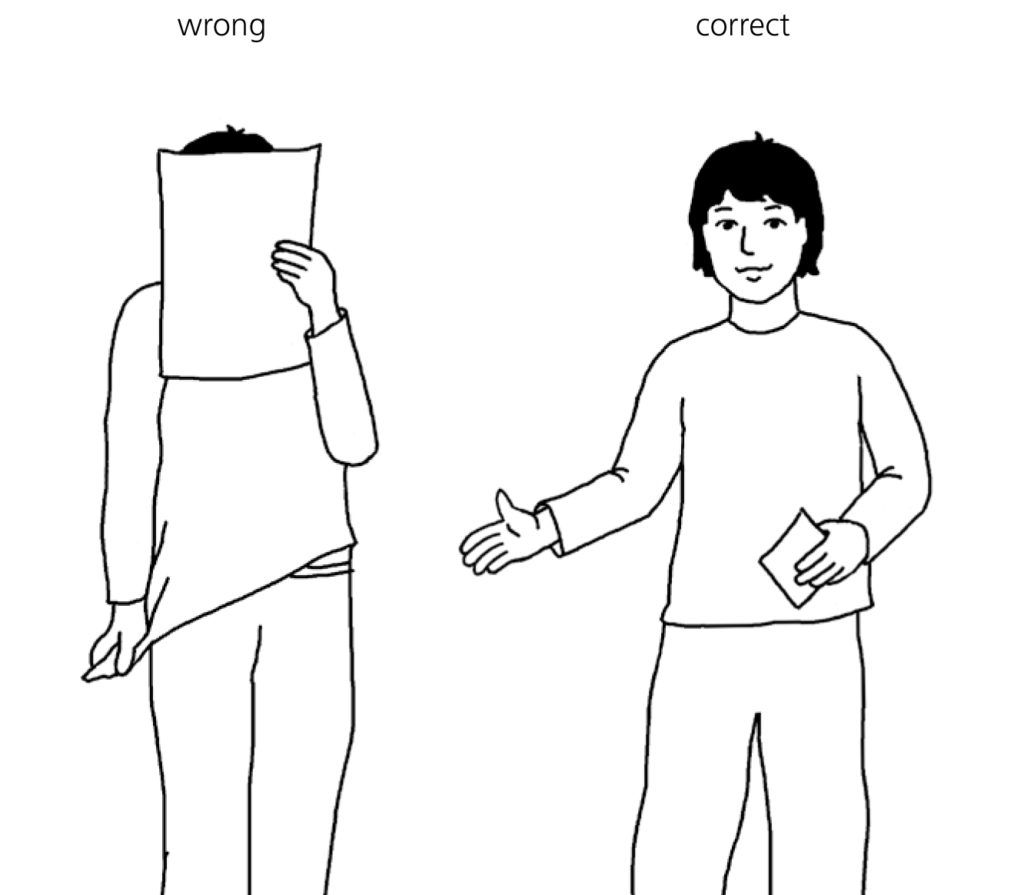Hints:
- In mainstream education classes, short presentations are usually already practiced in the lower levels; in HLT this is also possible and useful from the 3rd/4th grade on if the students are appropriately supported.
- See topic “Presentation” as well as #31 and the student materials M14 in the volume “Mediation of learning strategies and techniques in HLT” (= volume 5 of this series). This material is dedicated to the topic “preparing and giving a presentation” and also includes content -related aspects (information gathering, etc.).
- The above referenced time requirements apply only to the third point in the process (sequence for illustration purposes of the criteria for a good presentation).
Procedure:
- Each child selects a topic for his/her presentation (e. g. “my hobby”, “from the life of my grandparents”, “my dream job” etc.). As a variant: the presentation in pairs. The presentations should last 5–10 minutes.
- The students begin with the planning of the assignments and collecting information. See also the referenced materials M14 in the volume “learning strategies and techniques for HLT” (which must be simplified for younger students).
- The students make notes of language-related problems (vocabulary, etc.) with support of the instructor.
- In addition to the referenced tips in M14.7 for the oral practice of the presentation, a sequence is conducted collectively in class. It proceeds along the sample pattern, as referenced in #22 and #29 (good/bad examples serving as basis for the criteria for a good presentation which the students compile. See list below. If the students can rely on the tips for the narration and reading out loud (#22 and #29, respectively), it simplifies their work, of course.
- It is possible to assemble in a special sequence essential vocabulary and sentence building blocks for individual parts of the presentation (see #31.
- The students choose 2–3 presentation tips to which they want to pay special attention. They practice the presentations individually, in pairs or in small groups, and provide each other with feedback (Question: “What turned out well with the presentation?”, “What aspects can still be improved?”).
- Finally, the presentation is given before the whole class or group level, followed by a discussion and assessment, also taking into account the content and quality of the presentation. The latter also considers the adherence to the tips for the presentation.

Tips for presenting:
- Speak loudly and clearly so that everyone can understand you!
- Don’t read too fast, but not too slow either. Make pauses.
- Do not read the text, speak freely or use note cards with key words.
- If possible, show one or several pictures or an artifact related to the topic for visualization.
- Use your voice deliberately, loudly and softly; excitingly, questioningly…
- Also use your mimicry and gestures; change your facial expressions and your posture to match your presentation.
- Always maintain good eye contact with your audience.
- Include your audience by posing questions during the presentation or asking for opinions at the end.






